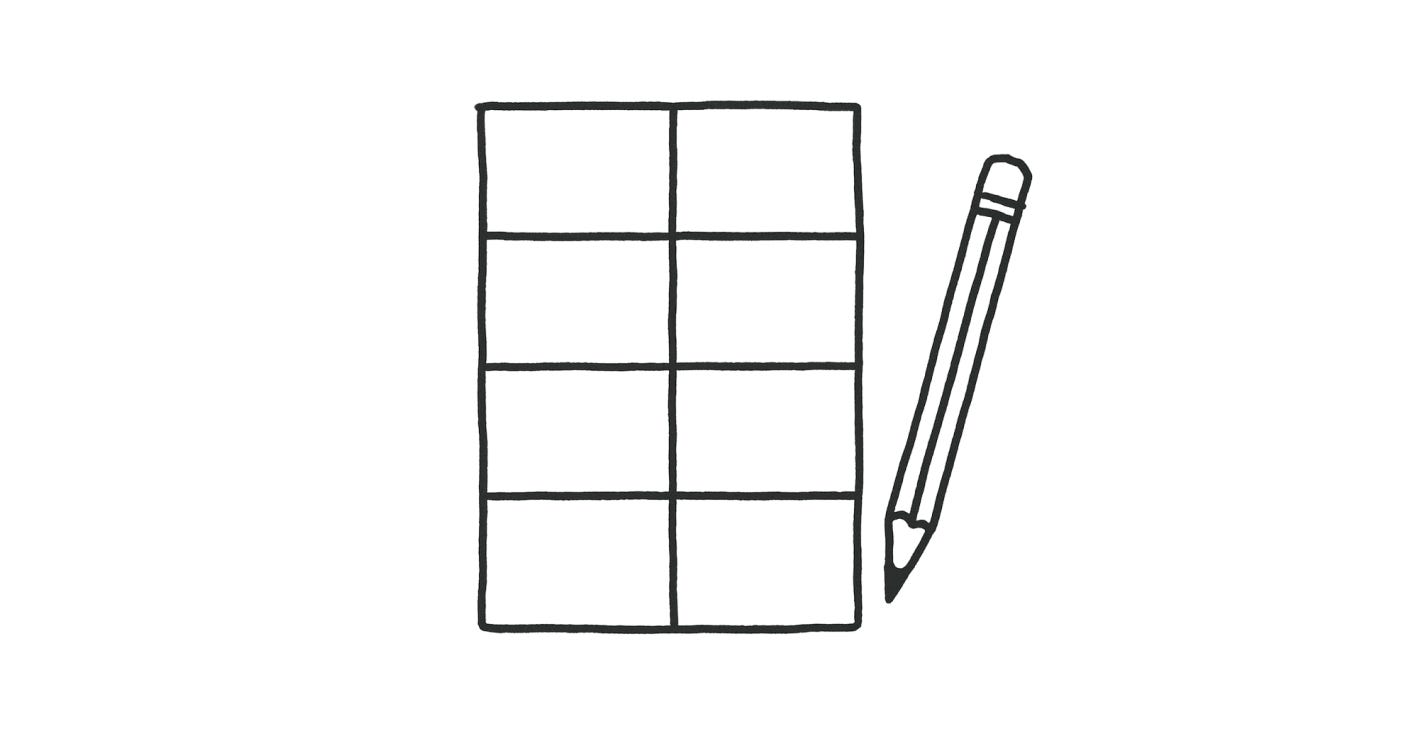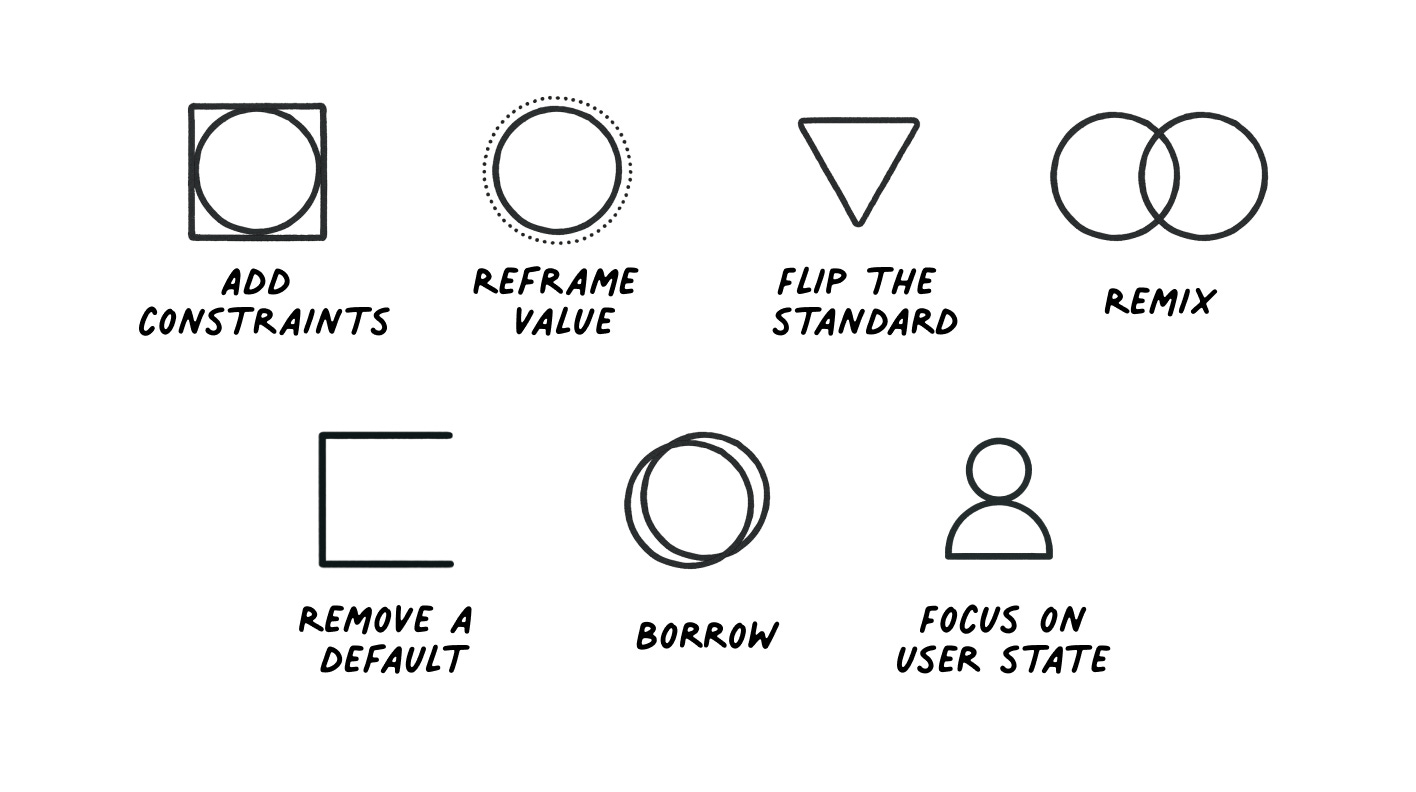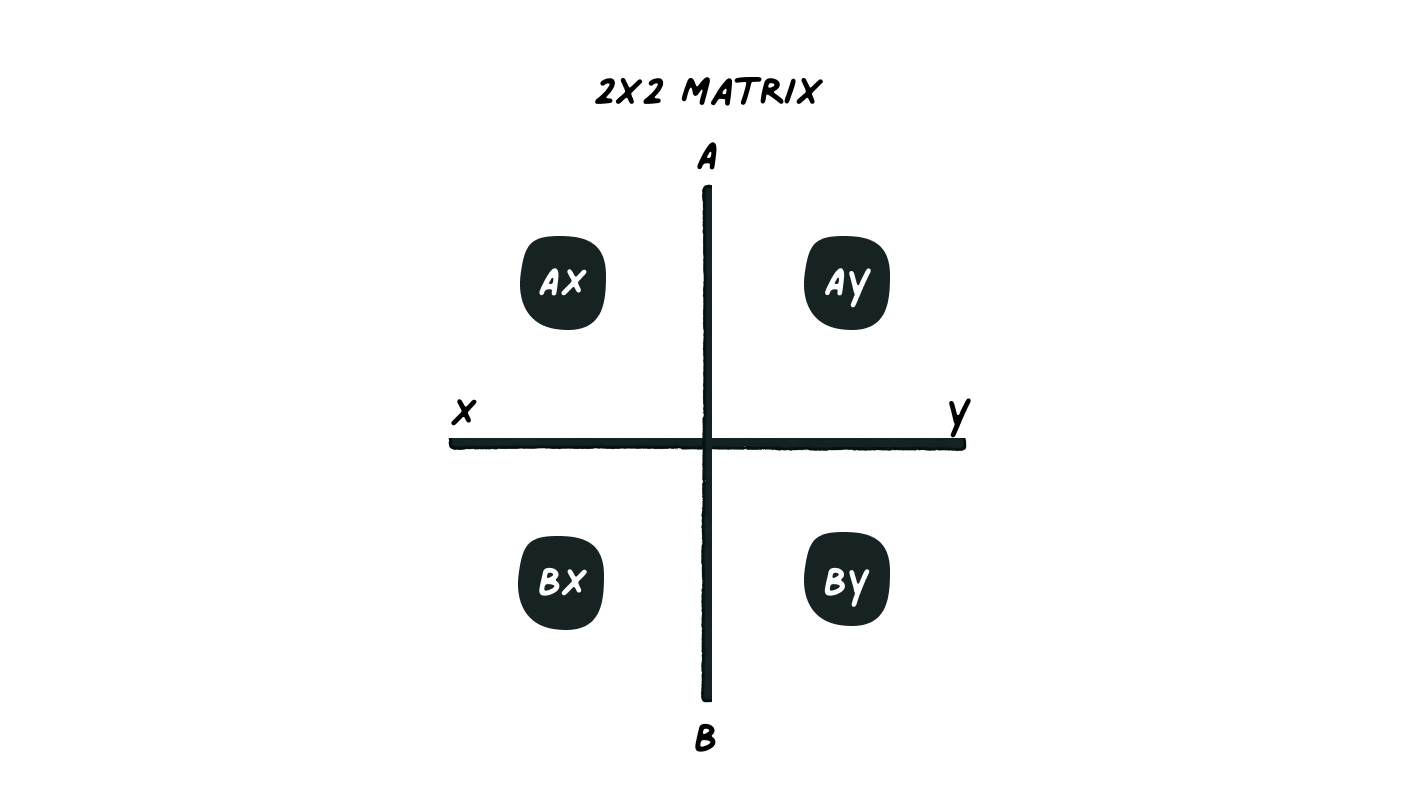The techniques that boost your ideation and make AI brainstorming better too
The one thing Crazy 8s is missing
In the last post, we talked about the fundamentals of brainstorming, the principles that still matter, whether you’re using AI or not. In this one, we’ll get into practical techniques you can use to generate a lot of ideas. These same techniques can also make AI more useful when you bring it into the process.
That classic advice, “don’t worry if your ideas aren’t great, just aim for quantity”, sounds nice. But let’s be real: it doesn’t always work.
Blank page. Sticky note. Still intimidating. Even well-known methods like Crazy 8s can fall flat. You fold a piece of paper into 8 sections and sketch one idea per section in 8 minutes. One minute per idea. It’s a gimmick, really. A nice way to say: produce a lot of ideas, fast. Go for quantity, don’t overthink. But still, I’ve seen empty sections. People say they feel stuck.
So, what actually helps?
For me, it’s scaffolding, prompts, provocations, or guidance that help us think, reflect, and break out of default patterns.
I tend to default to practical ideas that take the least effort to get the job done. Scaffolds help me push past that. They give just enough of a lift to explore different directions. Like a stool that helps you reach the top shelf.
Here’s one example: if you’re ideating solutions for a project on managing personal carbon offsets, a scaffold might be, “What ideas could I borrow from other fields, like finance or healthcare?”
Some of my other go-to scaffolds:
What if I flipped my thinking? What if the idea came from the complete opposite of my assumptions? If I assume a homepage needs to be compact and packed with immediate information, why not flip it? What if the home screen were spacious and expressive instead?
What other kind of value could this create? Or what if this weren’t about [x], but about [y]? Prompts like this help me rethink what a solution is really for. For example, what if managing personal carbon offsets wasn’t just about tracking your own impact? What if it could foster shared responsibility?
Scaffolds act like containers. They give you a frame to explore, boundaries that guide the thinking without prescribing the ideas.
Use these scaffolds to generate ideas
Here are a few I keep coming back to:
Add constraints: How might we design this if the user could only use [e.g. one hand / no internet / one minute]?
Reframe value: What if this wasn’t about [x], but about [y]?
Flip the standard: What if we did the opposite of what’s standard here?
Borrow: Who’s solved a similar problem elsewhere and what could we learn or adapt?
Remix: What if we combined [x] with [y]?
Remove a default: What’s one idea if we couldn’t rely on [x]?
Focus on user state: What’s one idea that helps when the user is [ e.g. rushed / uncertain / overloaded]?
Most of the time, just one or two scaffolds is enough to help me diverge and open up new ideas.
Get the next post straight to your inbox.
I’m writing about design and AI, exploring how new tools, evolving skills, and shifting roles are changing the way we design, and what designers uniquely bring to the table.
Use your ideas as springboards to generate more ideas
Sometimes I’ll take the ideas I’ve already come up with and treat them as starting points to push further and see where else they can go. Like:
SCAMPER
SCAMPER can help you come up with new ideas by changing something that already exists:
Substitute: What can I replace or swap out?
Combine: What ideas or elements could I merge?
Adapt: What can I tweak or borrow from a different context?
Modify: What if I exaggerate, minimize, or change part of it?
Put to another use: How else could this be used?
Eliminate: What can I remove or simplify?
Reverse: What if I flip the order or do the opposite?
Let’s try with an example. You have an idea for creating a carbon passport, a personal travel log that tracks your carbon emissions.
Combine → What if we include gamification, like badges, streaks, or levels?
Substitute → Substitute carbon units and logging with symbolic visuals, like stamps that reflect your impact or milestones.
Map into a spectrum or 2x2 matrix
Start with a specific idea, then zoom out. What’s the broader concept or principle behind it? From there, explore what sits on the opposite end. Stretch the idea by applying contrast or tension, what changes if you invert it, exaggerate it, or place it in a different quadrant?
For example:
Passive tracking ↔ Active engagement
One end is passive tracking, a system that logs carbon data automatically.
The other end is manual input, where the user tags or logs each trip themselves.
When you come up with two spectrums, try combine them into a 2x2 matrix. Explore how two tensions interact and gives more interesting ideas.
Example axes:
Passive tracking ↔ Active engagement
Subtle feedback ↔ Loud recognition
They give you four distinct behaviors: Passive + Subtle, Active + Loud, Passive + Loud, and Active + Subtle. Try coming up with at least one idea for each quadrant. For example, Passive + Loud means asking: what might it look like if the system tracks passively but delivers loud recognition?
Why these techniques make brainstorming with AI more effective
AI is genuinely promising when it comes to generating ideas—fast and in bulk. Try it yourself: ask for 100 ideas, and it’ll deliver in seconds. We simply can’t match that speed.
But speed isn’t everything.
A study in Nature Human Behaviour showed that while ChatGPT can help generate ideas, it actually narrows the range of ideas.
In one experiment, participants were asked to come up with a toy using just a brick and a fan. Those who used ChatGPT gave strikingly similar answers. 94% of the ideas shared the same core concept. Nine people even gave their toy the same name.
In contrast, people who relied on their own thinking or searched the web came up with more varied, unique ideas.
Across five different tests, the pattern held: ChatGPT boosted output, but the ideas were often too similar to each other.
I’ve seen this firsthand. During a university project, a friend and I unknowingly used ChatGPT to brainstorm ideas. We didn’t compare notes until later—and realized we had come up with almost the same concept. It felt like we were thinking in sync, but really, AI had quietly steered us in the same direction.
So what can we do instead?
Mix human and AI brainstorming. Don’t rely on AI alone. Start with your own thinking, then use AI to build on it, or do the reverse.
Bring in multiple sources. Combine AI suggestions with web research, real-world references, and your own experience. That mix brings more diversity to the table and keeps your ideas from blending into the default.
Use chain-of-thought prompting to guide idea generation step by step.
Instead of asking a single prompt like “What are 5 ideas for [x]?”, structure a multi-step thinking process that builds clarity and expands creativity. For example:
I'm working on [insert context]. The core problem is [insert goal].
Think step-by-step:
Restate the challenge in your own words to clarify what’s truly at stake and why it matters.
Generate 25 diverse ideas I could explore to address it.
Choose one idea that stands out and use the SCAMPER method to expand on it further.
Reason carefully through each step before moving on to the next. Be creative but structured.
In one experiment focused on generating low-cost product ideas for college students, Chain-of-Thought prompting led to a 27% increase in unique ideas compared to basic prompting. This step-by-step method also brought AI’s output significantly closer to the diversity level of ideas produced by real human groups.
That’s where scaffolding techniques come in, either to help you mix AI with your own thinking during brainstorming, or to structure your prompts using Chain-of-Thought.
Until next time,
Thomas
Thanks for reading Design Buddy. If you enjoyed it, tap the ❤️ or share it with a friend, teammate, or fellow designer.





